Femoral head avascular necrosis is a condition in which part of the femoral head undergoes necrosis due to decreased blood flow. The femoral head gradually disintegrates causing pain and even today, there are no effective rehabilitation methods other than symptomatic treatment such as decreasing the load on the hip joints with the use of a cane or walker. We herein describe our insights into this condition based on our experience with a case of femoral head avascular necrosis caused by steroid use in which KAATSU training was found to be highly effective. The patient was a 34-year-old woman (154 cm tall and weighing 50 kg, a radiologist). Since the age of 23, this patient had been receiving steroid treatment to control her refractory asthma. She later developed pain in her right hip and gradually suffered hip joint deformation, restricted range of motion, and difficulty in walking. MRI revealed Association Research Circulation Osseous (ARCO) stage IV disease. She suffered marked pain of the right hip joint every time she walked, occasionally falling and required a cane to walk. At the patientʼs own request, she received KAATSU training including KAATSU walking over a period of 3 months (total 28 sessions). Various assessments were carried out before and after training to determine the effects of KAATSU training. QOL was determined by SF–36v2, and marked improvement of role physical, body pain, general health, vitality, and social functioning were noted. Before training, the Japanese Orthopaedic Association (JOA) hip scores for pain were 10 (right), 40 (left), walking ability 16 (right), 20 (left), while 3 months after training, these scores were markedly improved in the affected side. Furthermore, not only did muscle strength on the affected side show marked improvement, but the MRI also revealed a tendency for improvement of the right femoral head avascular necrosis. DEXA showed signs of a clear increase in bone mineral density. Based on the above, these results suggest that KAATSU training is extremely useful as a rehabilitation method in patients with femoral head avascular necrosis. But, further larger scale investigations should be carried out in the future to support our findings.
View full abstract
